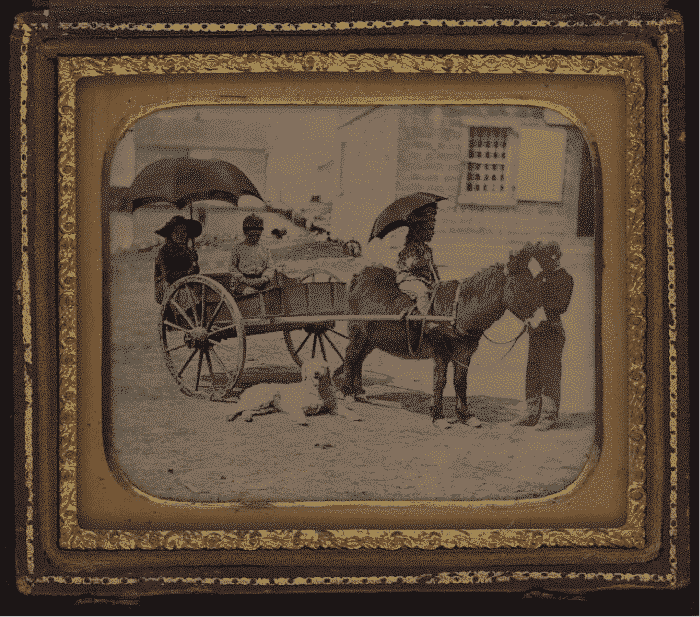Sign up for the Family Tree Newsletter Plus, you’ll receive our 10 Essential Genealogy Research Forms PDF as a special thank you!
Get Your Free Genealogy Forms
"*" indicates required fields

This misunderstood and often mis-identified photo format is considered one of the first commercially successful photographic methods. The name daguerreotype derives from one of its inventors, Louis Daguerre. In the 1820s and 1830s, Daguerre and Joseph Nicéphore Niépce developed this process. While 1839 is the date associated with this image, it wasn’t until the early 1840s that improvements made it easier to capture likenesses.
Characteristics of daguerreotypes
Daguerreotypes have a distinctive appearance. Their mirror-like polished silver coated copper plate allows the viewer to see himself. In order to see the subject of the image it’s best to hold it at a 45 degree angle.
They were available in a wide range of sizes from a whole plate of 6 ½ inches x 8 ½ inches to a sixteenth plate of 1 3/8 inches x 1 5/8 inches. You can find round ones, daguerreotype buttons, pins, and brooches.
Dating daguerreotypes
Dating them relies on the style and design of the image, the clothing worn by the individuals, and any identifying information on the subject. Each cased daguerreotype consists of a case, an image, a brass mat, a cover glass, and a strip that holds the whole image sandwich together snugly in the case. Sean Nolan’s Fixed in Time is the most complete guide to cases and mats. Each part is a clue to when the picture was taken. That’s in addition to the usual clothing clues and family history.
Here’s a warning—they are extremely delicate. The chemical salts of the image sit on the surface of the place. Touch them and you’ve damaged the image. My advice is to leave them in the case. Disturbing them can ruin them forever.
Daguerreotype identification
While most daguerreotypes depict individuals seated alone, this stunning one of children in a donkey cart. It’s an identified daguerreotype. According to the Library of Congress, the tykes are the children of Lt. Montgomery C. Meigs (probably Mary and Charles Montgomery and John Rodgers) in Detroit, Michigan.
It’s somewhat rare to find a daguerreotype with identification. They were small enough to fit in a pocket, and could sit on a bed stand. Most are unfortunately without a name or a place making telling the story of these images difficult.
They were popular from the 1840s until about 1865, depending on where your ancestors lived.
ADVERTISEMENT




